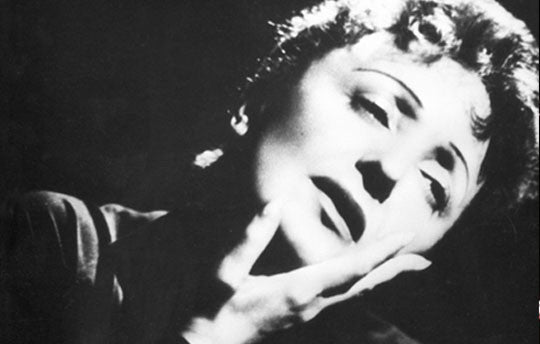Your Cart is Empty

In addition to its folk, France possesses a rich heritage of popular music, centred loosely around the art of chanson.
Two musical movements feed into modern chanson, both of them Parisian. The first was the art of satiric chansonniers, who led the way to the realist chansons by the end of the nineteenth century. Songs about the lives, dreams and tragedies of ordinary people were performed in the Montmartre cabaret Le Chat Noir. The second important style was the bal musette, an instrumental dance genre, carrying the characteristic sound of the accordion.
From the 1920s, the showbusiness side of chanson flourished. The old café-concerts had given way to the new music halls. London and New York loomed large on the horizon, and the French soon had their first international star in Maurice Chevalier.
If one artist represents the world image of twentieth-century France, it is Édith Piaf, the Parisian sparrow. She was a singer of enormous charisma, taking the drama of the old realists to a new level, and retaining their fascination with the colourful poor Paris while moving on to a more universalized treatment of human emotion.
By the time Piaf died in 1963, a new generation of artists appeared. George Brassens and Léo Ferré introduced an unparalleled degree of poetic aspiration. Jacques Brel, an accomplished dissector of the human condition, progressed from scout troop entertainer to the cabarets of first Brussels and then Paris.
The Left Bank cabaret scene also featured sultry new divas such as Juliette Gréco, the muse of Jean-Paul Sartre and lover of Miles Davis.
As Anglo-American pop and rock swept all in the 1960s, chanson was forced to react, by ignoring the new trends, mimicking them, or assimilating them creatively. Brel typified the first tendency. Elvis simulacra with anglicized stage names such as Johnny Hallyday spearheaded the mimics.
Other artists brought a greater individuality to the problem. Trumpeter, singer and songwriter Boris Vian also produced surrealist novels and poetry, and worked on rock’n’roll material.
Serge Gainsbourg had a fascination with all things American, but his incorporation of such influences was creatively cannibalistic rather than slavishly mimicking. His classically derived melodies, clever lyrics, and the close-miked murmured singing style made him a major force of pop-era chanson.
In the 1970s and 80s, some new artists were producing high-quality chanson with modernized arrangements. Jacques Higelin combined the stage presence of a Mick Jagger with a feel of the traditional music hall.
By the mid-1980s, performers such as Étienne Daho were combining a chanson-imbued take on contemporary international pop. Around this time, a fully fledged return to the roots of popular chanson was gathering pace, particularly among Les Garçons Bouchers and Pigalle.
Through the 1990s, a fresh set of artists included singer-songwriters such as Thomas Fersen. The chanson minimaliste movement combined noir-shaded instrumentation, all rhythm-boxes and David Lynch guitars, with droll, half-murmured texts.
As an antidote to the minimalist darker side, a school of light-hearted performers arrived, with stars such as Mathieu Chedid.
There was even a Gainsbourg figure in the shape of the composer, singer and arranger Benjamin Biolay, who worked a string of new chanteuses.